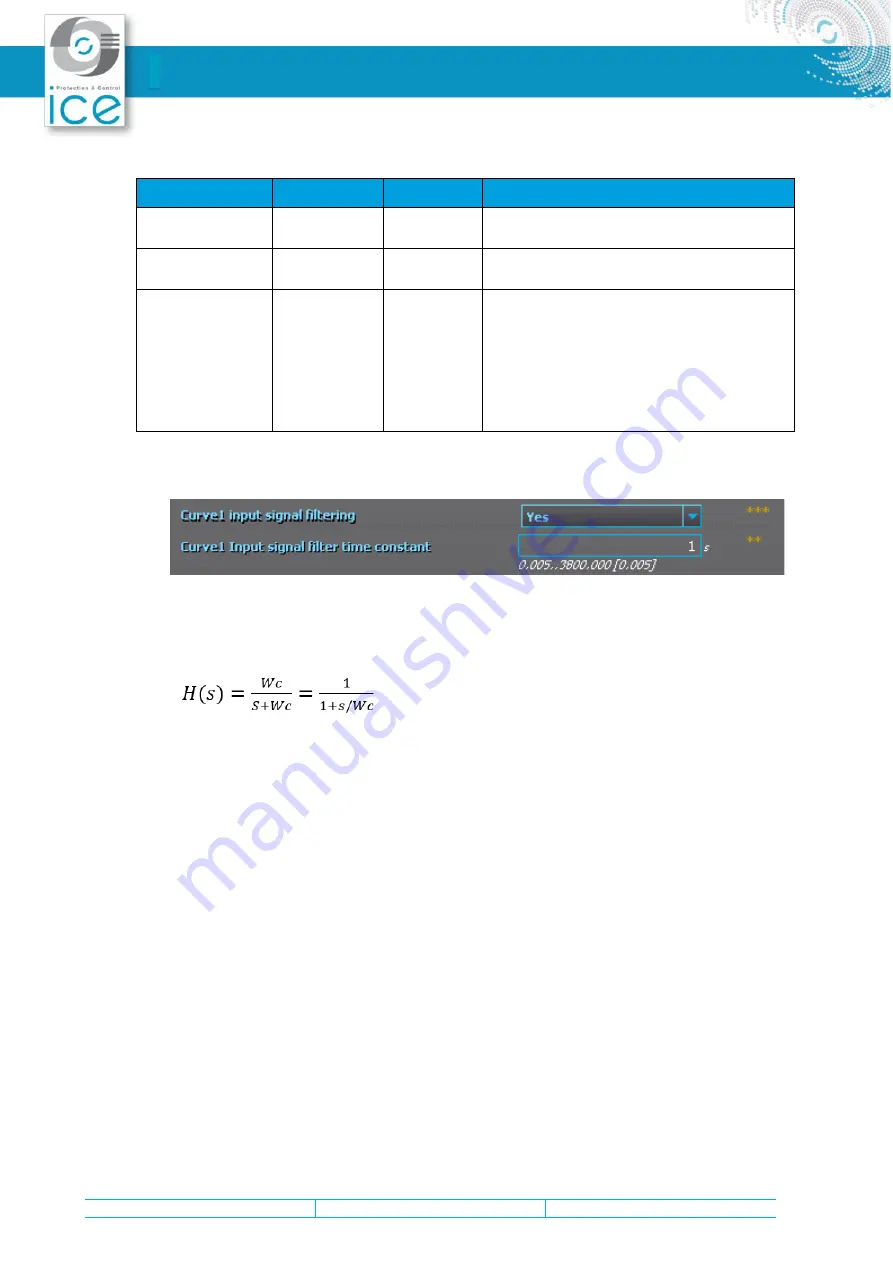
Reference: A938
Index: B
Page 73
This document is the property of ICE SAS. It can not be reproduced or communicated to third parties without authorization.
Instruction Manual – NPS914 Alarm and Indication IED
Table. 6.2. - 15. Main settings (input channel).
Name
Range
Default
Description
Analog input scaling
0: Disabled
1: Activated
0: Disabled
Enables and disables the mA input.
Scaling curve 1...4
0: Disabled
1: Activated
0: Disabled
Enables and disables the scaling curve and the mA
input measurement.
Curve 1...4 input
signal select
0: RTD S1
resistance
…
15: RTD S16
resistance
16: mA in 1 (I card
1)
17: mA in 2 (I card
2)
0: RTD S1
resistance
Defines the measurement category used for mA input
control.
The input signal filter (see the image below) calculates the average of received mA signals according to
the set time constant. This is why rapid changes and disturbances (such as fast spikes) are smothered.
The Nyquist rate states that the filter time constant must be at least double the period time of the
disturbance process signal. For example, the value for the filter time constant is 2 seconds for a 1 second
period time of a disturbance oscillation.
When the curve signal is out of range, it activates the "Out of range" alarm, which can be used inside logic
or with other relay functions. The signal can be assigned directly to an output relay or to an LED in the I/O
matrix. The "Out of range" signal is activated, when the measured mA signal falls below the set input
minimum limit, or when it exceeds the input maximum limit. The "Out of range" signal is very useful when
e.g. a 4…20 mA input signal is used (see the image below).
















































